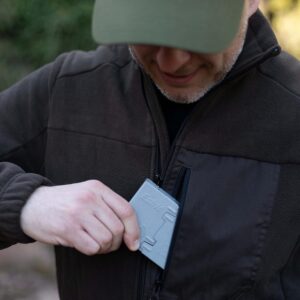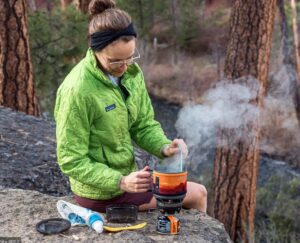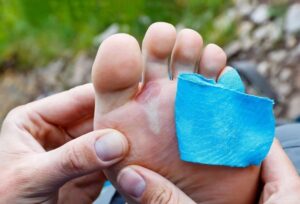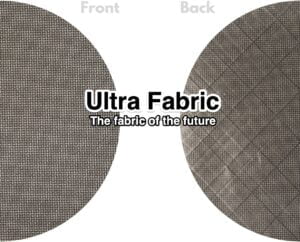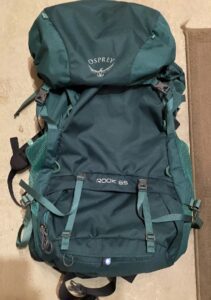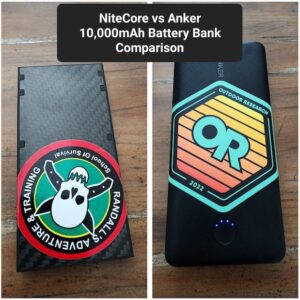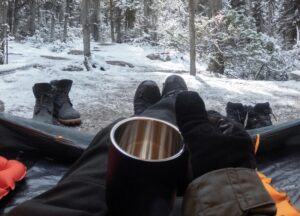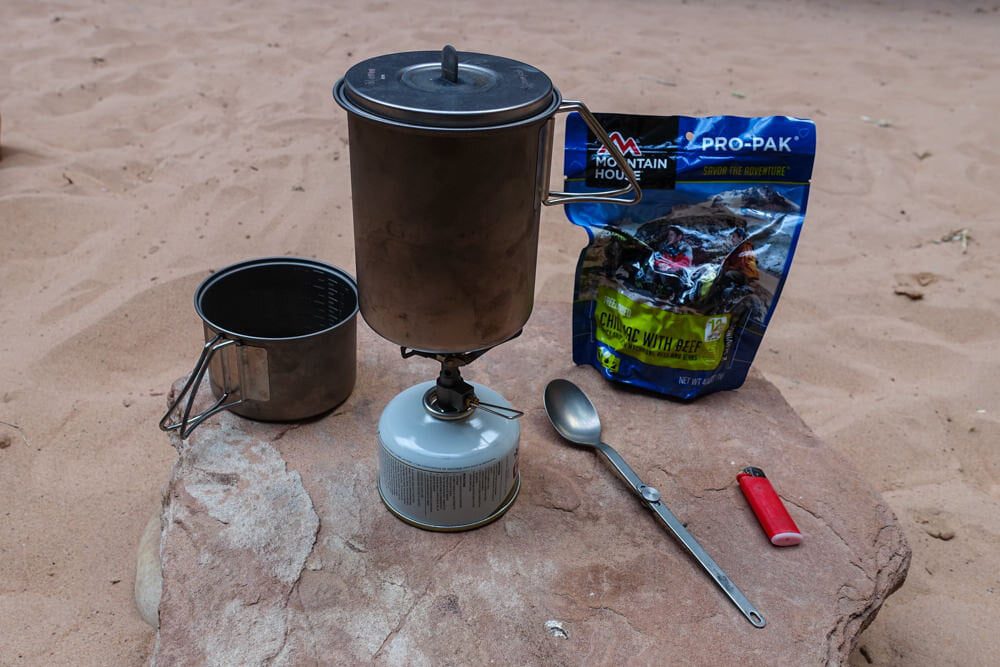
Short hikes allow us to explore nature without overpacking. This article will recommend optimal ultralight cooking kits for short trips, so you can enjoy a warm meal without weighing down your pack. Learn how to choose a compact cooking setup that balances weight, performance, and convenience on the trail. We’ll cover the pros and cons of different ultralight cooking systems for minimalist hikers and share specific gear recommendations. With the right kit, you can savor a hot meal under the stars without sacrificing comfort or overloading your backpack. Now, let’s explore the fascinating world of ultralight cooking kits!
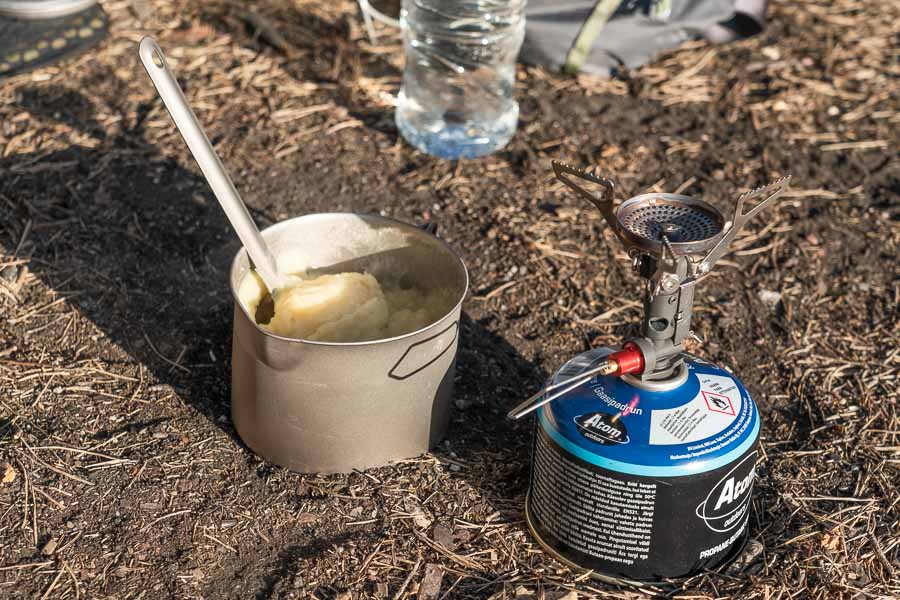
Understanding Ultralight Cooking Kits
Hello there! If you’re an outdoor enthusiast who loves hiking, there’s a good chance you’ve heard the term “ultralight cooking kits”. But what exactly does that mean?
What is an Ultralight Cooking Kit
An ultralight cooking kit is a minimalist, lightweight set of cooking gear specially designed for outdoor excursions like hiking, camping, and backpacking. It generally includes a compact and lightweight stove, cookware such as pots and pans, as well as cutlery and other essential utensils. All these components are designed to be incredibly light and compact to carry comfortably in a backpack without weighing you down.
Importance of Ultralight Cooking Kits for Hiking
Ultralight cooking kits are vital for hiking trips. Mainly because they provide complete independence. You don’t have to rely on pre-packaged food or worry about finding food sources on your journey. These portable cooking kits allow you to cook warm, nutritious meals to replenish your energy. Because they’re lightweight, they do not add unnecessary weight to your gear, keeping your load manageable and hiking enjoyable.
Basic Components of an Ultralight Cooking Kit
A typical ultralight cooking kit includes a stove for cooking, cookware for meal preparation and serving, and utensils for eating. Often, you’ll find items like a pot, pan, spoon, fork, knife, and other necessary tools included in the kit. Some kits take it even further with extras like mug, bowl, and even a small cutting board, all designed to be as light as possible.
Assessing Your Hiking Needs
Now that we’ve cleared up what an ultralight cooking kit is, it’s time for you to start assessing your hiking needs. Your specific requirements will largely determine the type of ultralight cooking kit that will best suit you.
Duration of your Hike
First and foremost, take into consideration the duration of your hike. If you’re planning a day hike, you may need fewer utensils and may only plan for lightweight snacks and a single main meal. For multi-day hikes, you’ll need a kit with a broader range of utensils and cookware to prepare multiple meals.
Type of Meals You Intend to Cook
Next, think about the type of meals you plan to cook. If you’re keen on just boiling water for instant meals or warming up canned food, a simple canister stove and a single pot should suffice. But if you wish to prepare more elaborate meals, you might need a kit with a larger pot, frying pan, and perhaps some additional tools.
Weather and Altitude Factors
Weather and altitude changes can impact your cooking experience. For instance, canister stoves might not work well in freezing temperatures or at high altitudes, while white gas stoves perform better under these conditions. These factors should influence your choice of stove.
Number of People in Your Group
The number of people in your hiking team is another vital factor. If you hike in a large group and you all plan to cook together, you might need larger pots and more substantial stoves. On the other hand, if you hike alone or with just one companion, a much smaller kit will do.
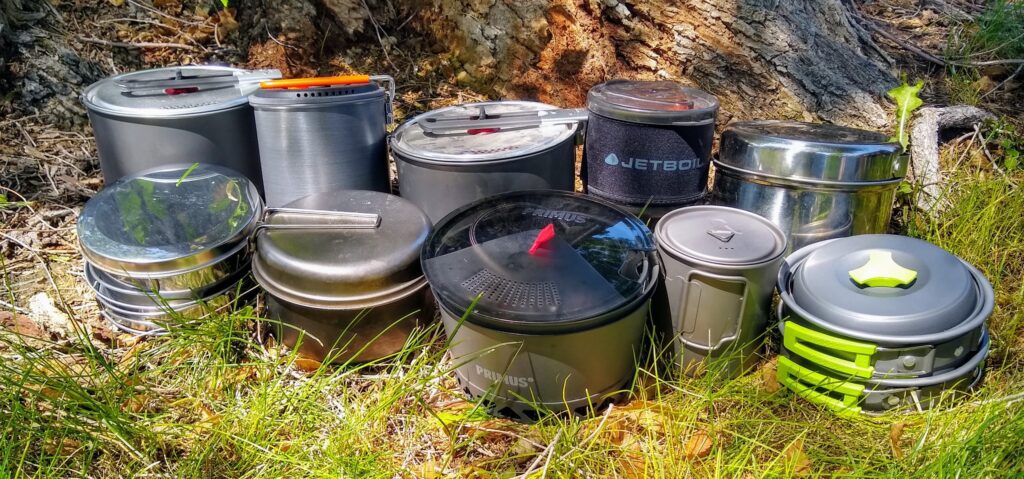
Choosing Your Cookware
When selecting cookware, various factors come into play. Let’s go through them.
Material Options
Cookware comes in a variety of materials such as aluminum, titanium, and stainless steel. Aluminum is lightweight, affordable, but less durable. Titanium is super light, durable, and conducts heat well, but is usually more expensive. Stainless steel is affordable and highly durable, but is heavier.
Weight Considerations
When it comes to hiking gear, every ounce matters. Minimizing the weight of your cookware can significantly reduce your overall load, making the hike easier and more enjoyable. Always check the weight of the pots, pans, and stove before purchasing.
Volume and Size
Consider what size pot you’ll need. If you’re just boiling water for dehydrated meals or coffee, a small pot should do. But if you’re cooking larger meals or for multiple people, you’ll need a bigger pot.
Comparing Single vs. Nested Cookware
Nested cookware sets where all the components fit into each other are excellent for multiple people or gourmet cooking. Single pots are more suited to solo hikers who like to keep things simple.
Choosing Your Stove
Your stove is an integral part of your cooking kit. Let’s explore the factors to consider when choosing one.
Types of Ultralight Stoves
There are several types of ultralight stoves available: alcohol stoves, wood stoves, canister stoves, and liquid fuel stoves. Each type has its advantages and disadvantages, ranging from weight to usability to cooking time.
Fuel Type and Availability
Consider the type of fuel your preferred stove uses and its availability. Canister stoves use a mix of propane and isobutane, while liquid fuel stoves use white gas. Alcohol stoves, as the name suggests, run on denatured alcohol.
Stove Efficiency and Performance
Stove performance is a crucial factor. Some stoves boil water faster, have better wind resistance, and can cook more complex meals. Review the stove’s specifications and performance reviews before deciding.
Safety Features of Portable Stoves
Pay attention to the safety features of the stoves. Look for stable pot supports, effective wind shields, and securing mechanisms that ensure the stove doesn’t tip over while cooking.
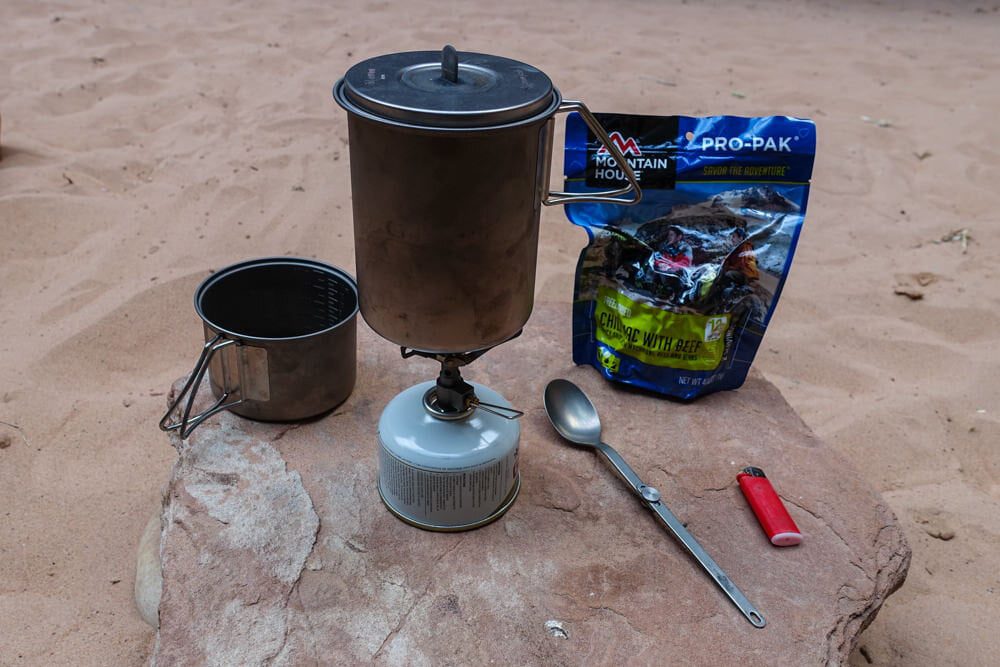
Choosing Your Utensils
Cutlery and cooking utensils are fundamental parts of your ultralight cooking kit. Let’s look at the points to consider when choosing them.
Ultralight Material Options for Utensils
Utensils come made in various materials such as plastic, metal, and titanium. Plastic is lightest but can break or warp easily. Titanium is the best of both worlds – extremely light and exceptionally strong, but it tends to be more expensive.
Compact and Collapsible Designs
Look for compact and collapsible designs that can be packed easily without taking up much space. These features make utensils highly portable and convenient to carry.
Practicality and Durability
Practicability and durability of the utensils matter. Choose utensils that meet your cooking and eating needs and can withstand outdoor conditions.
Packable Food Options
Planning your meals is as important as choosing your cooking gear.
Calorie-Dense Foods for Hiking
When you’re hiking, you need foods that are high in calories to replenish the energy you burn. Opt for calorie-dense foods like nuts, dried fruits, and energy bars.
Dehydrated Meals
Dehydrated meals are light, easy to pack, and require only boiling water to prepare. They come in various options, from breakfast oats to soups to pasta, making meal planning easy.
Innovative Packable Meal Ideas
There’s room to be creative! Try packing homemade ingredients in vacuum-seal bags or thinking about new combinations that suit your dietary preferences.
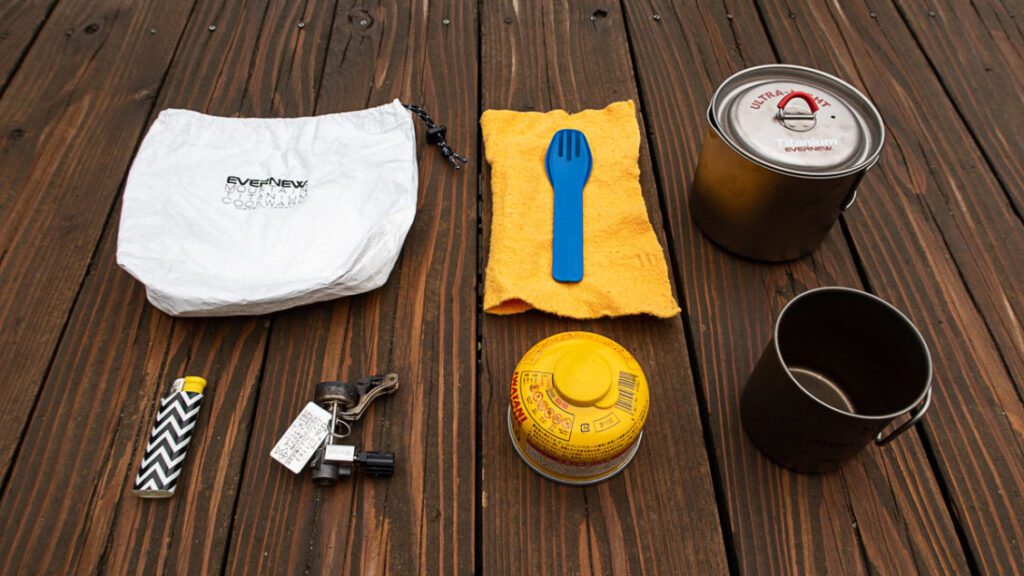
Importance of Hydration
Hydration is crucial on a hike, particularly when you’re cooking and consuming salty foods.
Carrying vs. Purifying Water
You have two primary options: carry your water or purify it on the go. Carrying water increases your load but ensures you always have safe drinking water. If you prefer to purify it, there are multiple methods, ranging from purification tablets to filters.
Choosing a Water Purification System
The right purification method depends on your personal preferences, your route, and the quality of the water sources available. Weigh your options carefully.
Hydration Packs and Light Water Bottles
Invest in a lightweight hydration pack or a lightweight water bottle. They make carrying water more comfortable and convenient.
Maintaining and Cleaning Your Cooking Kit
Taking care of your cooking kit is essential for its longevity.
Care of Ultralight Cookware
Handle your cookware with care to prevent dents and scratches. Never use metal utensils on your non-stick pot or pan as it can damage the coating.
Cleaning in the Backcountry
Clean your cookware after each use with a small sponge or cloth and biodegradable soap. Ensure you adhere to Leave No Trace principles, disposing of any food particles properly.
Routine Maintenance of Ultralight Stove
Regularly inspect your stove for any signs of wear and tear. Regular cleaning and maintenance can increase the performance and lifespan of your stove.
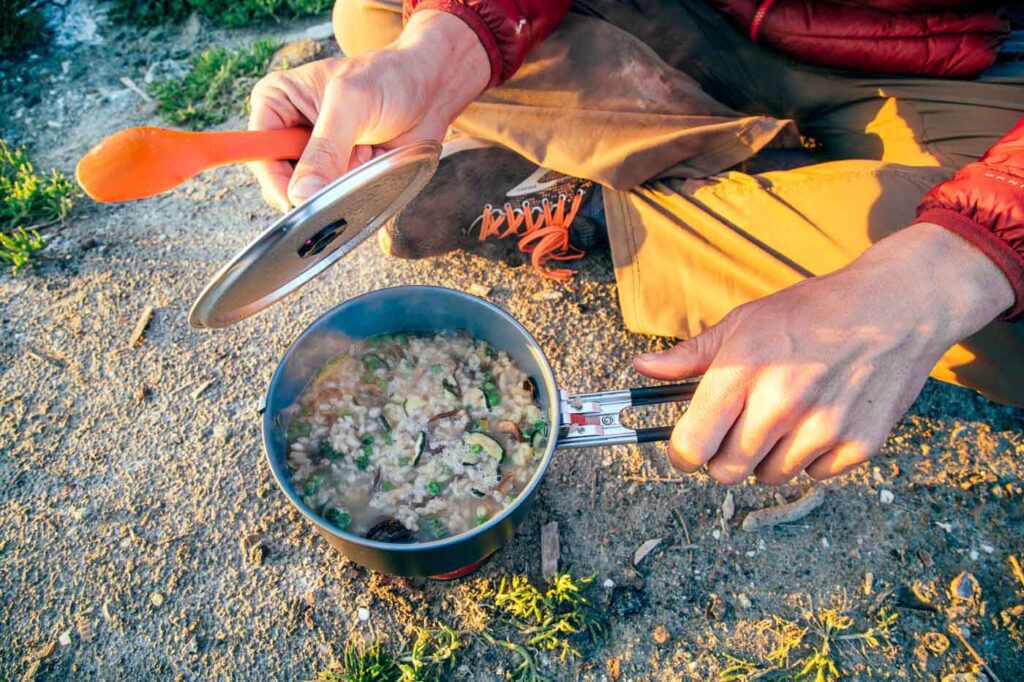
Compact and Efficient Packing Tips
Packing your cooking kit effectively can maintain its condition and make your life easier on the trail.
Making the Most of Your Backpack Space
Efficient packing is necessary for maximizing the space within your backpack. Ensure your nested cookware is compactly arranged and utensils are safely tucked in.
Protecting Fragile Components
Wrap your stove and other delicate components in a piece of cloth or towel to protect them from damage during the hike.
Optimizing Weight Distribution
Distribute the weight evenly in your backpack. Keeping the heavier items in the middle will help maintain your balance and make the backpack easier to carry.
Exploring Brand Options
Last but not least, let’s discuss the brand options.
Established Brands in Ultralight Outdoor Gear
Many established brands are synonymous with quality and durability in outdoor gear. While they might be pricier, their products are often worth the investment.
Comparing Cost vs. Quality
While cost is a vital factor, quality should not be compromised. Sometimes, an expensive item represents better value because it lasts longer and performs better.
Reviews and Recommendations
Look for reviews and recommendations from fellow hikers and outdoor enthusiasts to gain insights on which products perform well in real-life conditions.
That covers just about everything you need to know about choosing an ultralight cooking kit for your next hiking trip. With the right knowledge and informed decisions, you’d be well on your way to enjoyable and worry-free outdoor cooking experiences. Happy hiking!
